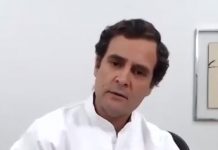
EDITED EXCERPTS
How did the Edinburgh Festival Fringe become the world’s largest arts festival?
In 1947, the Edinburgh International Festival started as a cultural intervention to bring people together after World War II. Eight theatre companies were pleased with the festival happening in Edinburgh, but annoyed at not being invited to take part. They realised that there would be an audience and media eager to see them perform. So they decided to stage their work anyway. That’s how the Fringe started. Now, we have young performers doing something new and big artists putting up works of greater scale. Fringe has everything — art, comedy, music, opera, children’s shows, cabarets. My organisation supports those who want to be part of it, but does not decide who they are and what will they do.
How have you maintained Fringe as an alternative to the Edinburgh International Festival?
We support it for whatever it is. I guess the Fringe is an alternative to the Festival, and the Festival is the alternative to Fringe. It’s avant-garde, cutting edge work, and we support that. There are 12 festivals in Edinburgh each year, and seven happen in the summer. My peers who run other festivals are curators and art directors; they have different ways of organising their festivals. We deliberately don’t. The look of our venues is very different. They are temporary structures created especially for the works. The International Festival is held in big, year-round venues. Fringe performers have to be entrepreneurial, which makes them different.
Fringe is an unjuried festival. What are the logistics of planning and selection?
The only line we draw is for the performances listed in the programme, because we have to go to the printers. But our registrations remain open even after that. There is an unending appetite for an artist to take part, to look for alternative space. At the end of each Fringe, in November and December, we compile a list of all these spaces and then interested companies make their decisions. We talk them through the process, the auctions and give necessary advice.
Do issues of quality crop up?
We have been asked that if there is no curation overall, why would it be any good. I could argue the opposite is true. As an artist, you’re making this huge commitment to do a show for a month in front of a live audience. You don’t do that unless you know your work is good. I’m not saying it’s all fantastic. But there is a huge range that allows artists to take risks. In 1999, Delhi-based playwright Roysten Abel produced Othello: A Play in Black and White and won the Fringe First Award. He interacted with several people. On the back of that he toured the show for 10 years. It’s a risky business but the rewards are greater.
Since you have taken over as the CEO, audience numbers have grown massively. How have you managed that?
We just have to plan well. The number of participating companies has increased from the low-2000s to the mid-2000s. In terms of audience, I’m pleased that it’s grown because that’s our job. The festival is a vast, daunting environment, but also a lovely social event. The audience is keen, loyal and eager to discover the next big thing. Wherever you are, you’re talking about what you’ve seen, what’s turning out to be the best show, and you’re the first person to see it.
What’s a day like at the Fringe?
A typical day will be long, exhausting, exhilarating and will contain something you didn’t expect. Performances are happening all the time. The venues are all open. Half of our audience comes from Edinburgh and Scotland; the rest from other parts of the UK and 15 percent from overseas. It’s not a huge percentage, but it’s 15 percent of a massive number of people.
aradhna@tehelka.com












